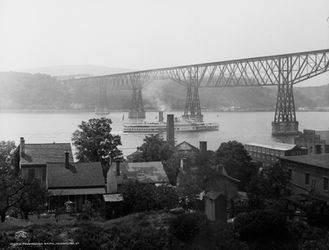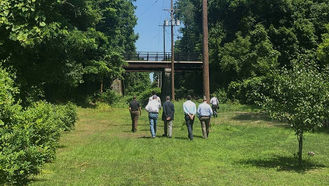ABOUT THE TRAIL
TRAIL ROUTING
: The map shows the routing of the MJM Northside Line. The trail is approximately 2.7 miles long and links many valuable community assets within the City and Town of Poughkeepsie, including:
-
Marist University
-
Morse Elementary School
-
Warring Elementary School
-
Family Partnership Center
-
Beulah Baptist Church
-
Hudson Heritage
-
Mid-Hudson Regional Hospital
-
Dutchess County Mental Health
Campus
-
Quiet Cove Riverfront Park
-
Poughkeepsie Waterfront
-
Poughkeepsie Northside
-
Walkway Over the Hudson
-
W.R.S. Dutchess Rail Trail
-
Fall Kill Creek
-
Pulaski Park
-
Mansion Square Park
-
College Hill Park
-
Morgan Lake
Click the map to Zoom in

Community Assets and Landmarks near the Northside Line:
HISTORY
The CSX rail corridor that will be converted into the Northside Line owes its existence to the rich industrial history of Poughkeepsie and Dutchess County. Founded on the Hudson River and situated halfway between New York City and Albany, Poughkeepsie was a natural site for settlement and commerce. With the operation of the Erie Canal in 1821, ships could travel from the Great Lakes to the Atlantic via the Hudson River.
With the boom in railroad construction, which started a few decades later, Poughkeepsie and the Hudson Valley became a railroad nexus for transporting mining and agricultural products to industrial and commercial centers in the Northeast. This, in turn, brought industry to the Hudson Valley, Dutchess County, and Poughkeepsie, with various factories sprouting up across the region. Notable examples include the Poughkeepsie Underwear Factory, first built in 1874.
While the Poughkeepsie Railroad Bridge, completed in 1889 and known today as the Walkway Over the Hudson, is perhaps the greatest artifact of the industrial age, the CSX rail spur is also a product of this history. Constructed in 1873, the corridor was built as a link between east-west and north-south rail lines, as well as a means of delivering coal to power the newly-completed Hudson River State Hospital. Beginning after the end of World War II in 1945, many of the industries in the region moved to other parts of the country. With the decline in industry came a decline in the necessity of the railroads, and for this reason many rail lines were abandoned in the post-war period. The CSX spur continued operation until the closure of the hospital in the 1990s, and it has lain dormant since.
In December 2019, Scenic Hudson negotiated and funded (in part via the Lila Acheson and the DeWitt Wallace Hudson Valley Land Preservation Endowment) the acquisition of 2.7 miles of the former rail corridor that passes through residential and commercial neighborhoods, as well as alongside Marist College, before ending near the Hudson River. The Dutchess County Legislature voted unanimously to assume ownership of the corridor and to develop and maintain the new rail trail, which will enhance recreational and economic opportunities. Once completed, the Urban Trail will serve as an active transportation option for residents, serving the redevelopment of the Hudson River State Hospital by Hudson Heritage, and providing access to Quiet Cove and the Hudson River.











